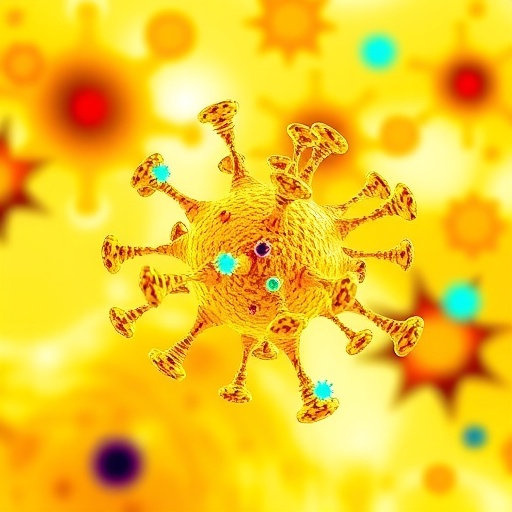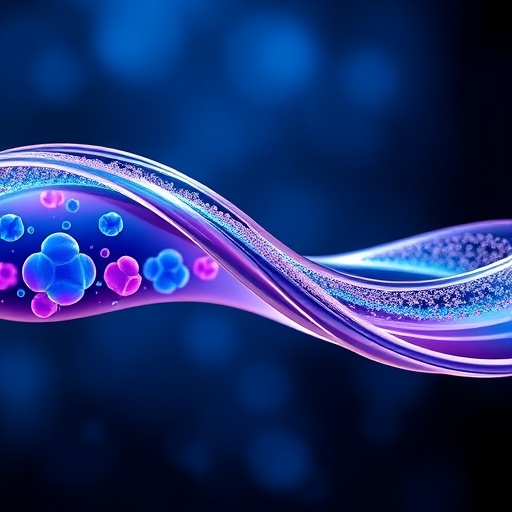University of Cincinnati Cancer Center researchers are poised to unveil a series of groundbreaking findings at the upcoming American Association for Cancer Research Annual Meeting 2025 in Chicago. Focusing predominantly on head and neck cancer (HNC) and other malignancies, their work explores complex molecular mechanisms, immune system interactions, and novel therapeutic approaches with the potential to transform cancer treatment paradigms.
A particularly compelling study delves into the multifaceted role of interleukin-9 (IL-9), a small protein previously known to both exacerbate and inhibit tumor growth, contingent on cancer type. Until now, IL-9’s influence on HNC remained an enigma. The research, led by Sam Nusbaum, reveals that IL-9 expression is notably elevated in tumor tissues from patients with head and neck squamous cell carcinoma (HNSCC) compared to healthy individuals. Intriguingly, higher IL-9 mRNA levels correlated with poor patient survival, underscoring its potential as a prognostic biomarker. At the cellular level, IL-9 appears to induce the secretion of IL-6, a cytokine notorious for impairing the cytolytic function of immune cells tasked with eliminating cancer.
However, the story of IL-9 is far from linear. Experimental animal models demonstrated that increased IL-9 is paradoxically associated with reduced tumor size and weight, hinting at counterbalancing immune responses. This dichotomy suggests that IL-9’s role in tumorigenesis may be context-dependent, influenced by intricate molecular signaling and immune microenvironment dynamics. Nusbaum’s future investigations aim to dissect these pathways in precise molecular detail, shedding light on the dualistic nature of IL-9 in cancer progression and immune regulation.
Complementing this exploration, Lindsey Bachmann investigates signaling pathways integral to the function of natural killer (NK) cells—immune effectors pivotal in identifying and destroying cancer cells. Their research illuminates how blocking the CXCR2 receptor pathway impairs tumor growth in murine models, but only in the presence of NK cells and CD8+ T lymphocytes. CXCR2, a chemokine receptor, is crucial in directing immune cell trafficking and activation within tumors. This finding underscores the therapeutic potential of targeting immune cell receptor signaling to amplify anti-tumor immunity. Ongoing work will elucidate the mechanistic interplay between CXCR2 inhibition and immune effector cell behavior, potentially opening avenues to novel immunotherapies for HNC.
Beyond diagnostics, Jansen also probed the synergistic potential of combining immunotherapy with radiation modalities in recurrent HNC. Specifically, she investigated the effects of proton therapy (PT) versus conventional X-ray radiation therapy (XRT) when paired with immune checkpoint inhibitors like anti-PD1 antibodies. Both PT and XRT effectively stymied tumor growth in vivo and increased immune cell infiltration, yet the addition of immunotherapy conferred only modest additional benefits. These preliminary data suggest that while radiation primes the tumor microenvironment for immune infiltration, the anticipated synergism with immunotherapy remains elusive in animal models. Future experimental designs will aim to optimize these combinatorial strategies, potentially by refining dosing schedules or leveraging novel immune modulators.
Turning to breast cancer, the University of Cincinnati team explored the impact of nonmuscle myosin IIA (NMIIA) within HER2-positive tumors—aggressive breast cancers marked by elevated HER2 protein levels driving rapid proliferation and metastasis. Through molecular interrogation, the team identified NMIIA’s interaction with HER3, a related receptor, modulating intracellular signaling pathways that contribute to drug resistance and metastatic behavior. Clinical correlations revealed that elevated NMIIA expression, particularly in lymphovascular invasion (LVI)-positive tumors, portends worse patient survival. This discovery positions NMIIA as a potential therapeutic target, and the lab is actively developing a novel NMIIA inhibitor. If successful, this approach could augment current HER2-targeted therapies, combating resistance and metastatic spread.
The Cancer Center’s portfolio of research presented at AACR 2025 also includes advanced studies in colorectal cancer, where co-targeting HER family receptors and mutant KRAS mutations has shown efficacy, and investigations into the role of Stat1 in tumor immunity within tuberin-deficient cells, a finding with implications for LAM pathology. These multifaceted efforts underscore the Center’s broad commitment to deciphering the complex molecular and immunological landscapes that define cancers and rare diseases.
Collectively, these studies highlight the burgeoning era of precision oncology, wherein deep molecular insights are translated into targeted, patient-centric interventions. The convergence of immunology, molecular biology, and translational medicine embodied in this research holds transformative promise: personalized treatments informed by tumor and immune profiling, minimally invasive diagnostics, and combination therapies that outmaneuver tumor resistance mechanisms.
As the AACR Annual Meeting approaches, the University of Cincinnati Cancer Center’s contributions stand poised to ignite new conversations and collaborations, catalyzing advancements that may soon reshape clinical cancer care. The synthesis of fundamental discovery and applied research presented by these emerging scientists and established investigators exemplifies the dynamic pursuit of innovative solutions to some of oncology’s most pressing challenges.
Subject of Research: Head and neck cancer, breast cancer, lymphangioleiomyomatosis, cancer immunotherapy, metabolic vulnerabilities in rare diseases.
Article Title: University of Cincinnati Cancer Center Unveils Novel Insights at AACR 2025: IL-9’s Paradoxical Role, Immune Signaling Pathways, and Emerging Therapeutic Targets
News Publication Date: Information not provided.
Web References: Information not provided.
References: Information not provided.
Image Credits: Information not provided.
Keywords: Head and neck cancer, breast cancer, tumor growth, cancer immunotherapy, inhibitory effects, animal models, peripheral blood mononuclear cells, radiation therapy, NK cell receptor signaling, cell responses, cancer research.
Tags: AACR Annual Meeting 2025breakthrough cancer therapiescancer treatment paradigmscytokine IL-6 and cancerhead and neck cancer researchHNSCC prognostic biomarkersIL-9 role in cancerimmune system interactions in cancermolecular mechanisms in oncologynovel therapeutic approaches in cancertumor growth inhibitorsUniversity of Cincinnati Cancer Center





